10 Best Polarizing Filters in 2022 (For Perfect Landscape Photos!)
Many photographers overlook polarizing filters. Their purpose is often mysterious, and the results are difficult to define. Polarizing filters are a secret weapon for landscape photographers. They reduce reflections and enhance colors. But don’t let landscape photographers have all the fun!
Polarizing filters also cut down on glare and reflections on glass. This is valuable when shooting in a city. If you like vibrant colors, a polarizing filter gives you the deep colors you crave regardless of what you are shooting.
There is a mind-boggling array of polarizing filters that vary wildly in price. Major companies often have a line of polarizing filters with different features. If you have tried shopping for a polarizing filter, you are justified in throwing your hands up in despair.
We begin by exploring what a polarizing filter is and how they work. Then, we cover the best polarizing filters on the market at different price points. Finally, we will explore their features in a buying guide and tell you how to use them. This article will help you find the polarizing filter that is right for you. I am currently in the market for a polarizing filter to fit a new, larger lens. So let’s look at the options together!

What Are Polarizing Filters?
Before we jump in with the best polarizing filters, let us look at what these filters do and why so many landscape photographers use them.
A polarizer filter is a piece of specially coated glass that fits onto the front of your lens. It is designed to filter certain waves of light. You may not be familiar with polarizing filters in photography. But you might have encountered polarizing sunglasses.
Polarizing filters may screw onto the end or attach with magnets. Or you can buy polarizing filters that drop into a holder fixed to the front of the lens. You can even stack a polarizing filter with other filters.
How Do Polarizing Filters Work?
Polarization has to do with how light waves behave. Most natural light is unpolarized. But when it is reflected or bounced, the waves scatter. This makes it hard for your camera to capture a clean image. Polarizing filters reduce the randomness of the light waves. Filtering the scattered light results in reduced haze, glare, and reflections.
Polarizer filters let you see under the reflections and glare on water, snow, or glass. They also deepen the color and boost contrast in a way that is impossible to replicate in post-processing.
A polarizing filter improves the vibrancy of water and lets you see below the surface. Your sky becomes more vibrant and reduces atmospheric haze. Some vibrancy tools in photo editing programs may be able to simulate contrast and color. But you can’t edit out reflections and glare. Without a polarizing filter, you’ll never be able to see into a window or photograph the depths of the water.
10 Best Polarizing Filters
Here are our top 10 best polarizing filters. Many companies listed have a choice of polarizing filters. We have chosen a camera filter from each line that represents some of the brand’s best qualities.
10. Hoya Evo Antistatic CIR-PL / Hoya Fusion Antistatic CIR-PL
Diving into the world of Hoya filters can be confusing. The company has a wide range of circular polarizers. But they also market some filters under different names only in the USA. Similar filters can vary in features. Hoya has a wide range of filters from which to choose. Their mid-level anti-static circular polarizing filter goes under the name Evo in the United States. A similar anti-static filter is called Fusion elsewhere.
The filters have 16 or 18 layers of anti-reflective coatings. They are water and oil repellant and have a hardened top layer. Anti-static properties are particularly useful in situations where dust is a problem. All but the largest sized filters are thin, which reduces vignetting. All Hoya filters have an aluminum casing, and Hoya often adds an ultra-violet filter into their CPL to block UV light.
The price difference between the Evo and the Fusion is considerable. The Fusion is the better deal.
9. Tiffen Circular Polarizer
Tiffen makes a range of budget-friendly circular polarizers. Some have better light transmission for low-light situations. Others are designed for wide-angle lenses. They also offer a warming filter with a yellow tint. You can also choose between a circular and a linear polarizer.
This entry-level filter is made from aluminum and is one of the top-ranking filters on Amazon. It is a good filter to start with if you want to try a circular polarizer without spending much money. The filter has no anti-glare or protective coatings. This may make it more susceptible to breakage. But Tiffen’s 10-year warranty gives you some peace of mind.
If you like this filter, Tiffen makes a range of filters. Their top-quality HT filter has high-quality glass and anti-reflective coatings.
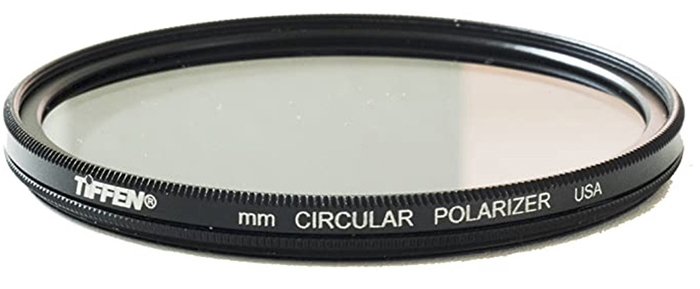
8. Nikon Circular Polarizer II
Nikon’s Circular Polarizer II is one of the top filters on Amazon. This screw-on filter is made by Nikon, but you can use it on any lens. The size offerings are limited, and the casing is made from aluminum. But the filter is multi-coated to reduce ghost images and flare. It is marketed as a much thinner and lighter option. This reduces vignetting on wide-angle lenses.
The filter is one of the more expensive offerings on this list. You are paying for a known brand name.

7. Marumi DHG Circular Polarizer
If you are looking for a lower-priced filter with many features, try the Marumi DHG Circular Polarizer. The filter has eight layers of anti-reflection coatings and is scratch resistant. It is made from low-profile aluminum to avoid vignetting. The filter will block more light than the more expensive models. But the company promises unsurpassed color neutrality.
If you like this filter and want an upgrade, try Marumi’s flagship filter, the EXUS. This filter has 18 layers of coatings for ultra-low reflection that are anti-static.
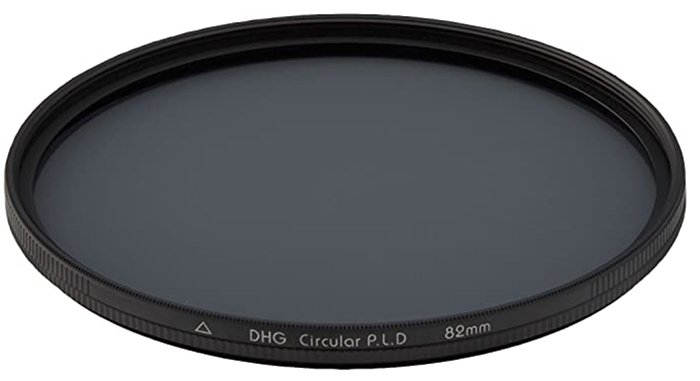
6. Urth Circular Polarizer (Plus+)
Urth, formerly Gobe, is an environmentally conscious company using recycled packaging. Urth’s polarizing filters come in the standard (premium) model. Or the Plus+ (professional) model. The company also offers a CPL plus ND filter combination. Gobe’s rebranding created a price increase that upset some customers. But the professional filter has high-level features with a lower price tag than other filters on this list.
The Plus+ filter is German Schott glass with 16 layers of nanocoating. The anti-reflection, true-color coatings remove lens flare and glare. The coatings also protect the filter from scratches and dirt. Light transmission is on par with the higher-priced filters. The slim casing reduces vignetting and is made from an aluminum alloy.
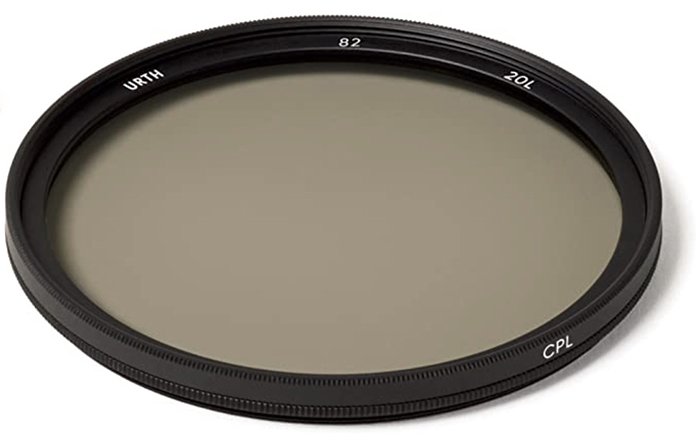
5. Kase Wolverine CPL
Most of the filters on this list are of the screw-on variety. Kase Wolverine filters use a magnetic system. The filter comes with a magnetic adaptor that screws onto your lens. Once it is installed, the filter pops right on. You can easily stack a polarizer and multiple neutral density filters. The magnetic system is easy to use. But the filters are not designed to be left on the lens. They will dislodge when hiking. The company also offers a combined CPL and ND filter.
The filter is made from high-quality materials. It gives high-quality results at a mid-level price range. The filter is made from toughened B270 optical glass. The scratch-resistant coatings repel oil, water, dust, and fingerprints. Kase filters are extremely thin and lightweight.
Sizes are limited. But Kase also offers a magnetic square filter system that works for lenses of various sizes.

4. B + W Master HTC-Pol Käsemann (High Transmission)
Do not let the name confuse you. B + W (B “plus” W) does not mean that the filters are designed only for black and white photography. Made by German company Schneider Kreuznach, the company offers two levels of polarizers—basic and master. The master HTC (high transmission) film provides a sharper, richer image. But it comes with a high price tag.
The scratch-resistant filter has 16 thin nanocoatings that repel dirt and water. The filter mount is made from brass, and you can choose between the F-Pro standard or the XS-Pro slim mount. The thinner filer reduces vignetting.
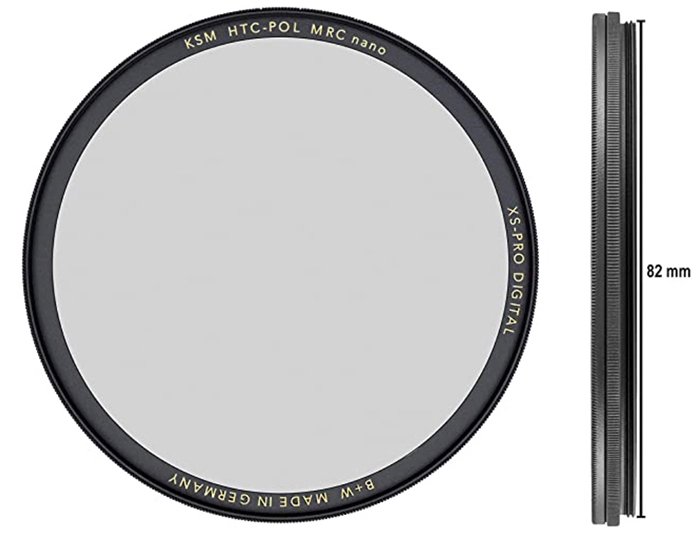
3. Lee100 Polarizer
If you are in the market for a top-of-the-line filter system and don’t mind the cost, check out the Lee100 Polarizer. This filter works with the Lee100 filter holder, purchased separately. This filter is made from lightweight, high-transmission polarizing glass with subtle warm tones.
You can buy the filters in the shape of a circle or square. And both work with the Lee100 filter holder. But you cannot rotate the square polarizer. The square filter is best used in a studio where you have control over the lighting.

2. K&F XC CPL Filter 28 Layer Super Slim
K&F offers three levels of polarizing filters. Each level has a different number of coatings. But even the most expensive comes in as one of the most affordable on this list. It is our pick for the best budget-friendly filter.
The XC CPL filter is packed with features and has 28 layers of coating. The coatings reduce glare and make the filter waterproof and scratch-resistant. The casing is made from an extra-tough aviation aluminum-magnesium alloy. The company also offers a CPL with a variable ND filter.

1. Breakthrough Photography 4x Circular Polarizer
The Breakthrough Photography 4x circular polarizing filter has an ultra-slim brass frame. This eliminates vignetting on wide-angle lenses. The glass is Schott superwhite optical glass with 16 nanocoated layers. And the glass has a high light transmission.
Breakthrough Photography bills this filter as having the sharpest and most color-neutral polarizer on the market. The filter has textured edges and polarization guides printed on the side. These help you find maximum polarization. Filters are weather-sealed to withstand water, dust, wind, and salt.
You can buy the CPL filter on its own or combined with a 3, 6, or 10-stop ND filter. The company offers a 25-year warranty, adding safety to your purchase.
All the features and durability at a mid-level price range make this filter attractive to a wide variety of photographers. The company offers a lower-priced 2x version with slightly lower-quality glass and fewer coatings.
What to Consider Before Buying a Polarizing Filter
Polarizing filters vary widely in price. The least expensive filter on our list is around 30USD. The most expensive is over 300USD.
The higher prices usually reflect build and glass quality. They also have more coatings on the glass. Less expensive filters may cause your photos to have a soft focus or pronounced color tint.
The best polarizing filters balance affordability with quality. Let us look at some of the characteristics that affect the price of a circular polarizer filter.
Linear vs. Circular Polarizers
There are two types of polarizers—linear and circular. The name does not have to do with the shape of the filter. Both are often round. The name has to do with the shape of the light hitting your sensor.
Linear polarizers only let in light moving in a vertical or horizontal direction. Circular polarizing filters (CPL) filter the light twice. A CPL is constructed in two parts. The first element is a linear polarizer. The second element called a “quarter wave plate,” makes the light spin or circulate.
The circular polarizer helps cameras accurately meter light in the scene and reduces the effects of a mirror in your camera. Circular polarizers twist. This lets you gradually modify the light waves. You can reduce some reflections while leaving others.
Practically, both polarizing filters do the same job. But circular polarizers are the most common by far. The need for circular polarizers may change as cameras continue to change. If you have a mirrorless camera, the difference may be undetectable. Linear polarizers are generally less expensive.
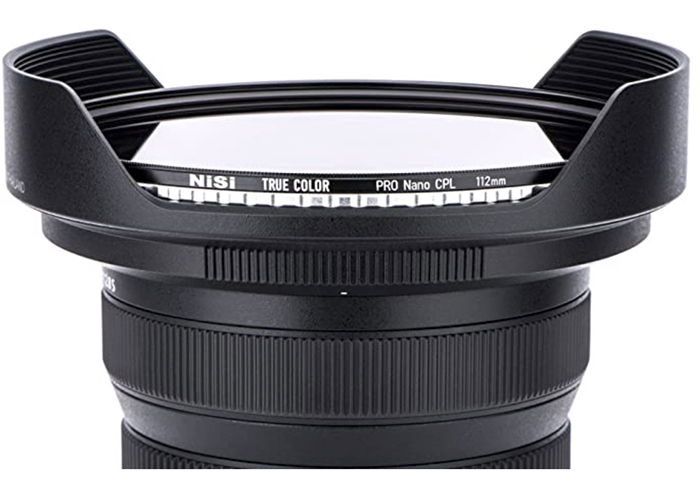
Color Cast
When choosing a circular polarizer filter, look for high-quality glass with no color cast. Some polarizer filters have a yellow, brown, magenta, grey, green, or blue color cast. “Warm” filters purposefully add a slight yellow color cast. It is pleasing to the eye and counters less attractive tints. You can correct the color cast in post-processing in some cases, so it is not a problem.
Thickness
Another thing to look for in a polarizer filter is vignetting or darkened edges. Thin filters create less of a vignette at wide angles. Thicker filters darken the edges of the image. Thinner filters are also easier to manipulate in the field. They are easier to screw onto your lens.
Light Transmission
Polarizers reduce the amount of light coming into your lens. Filter companies rate the level of light transmission, which is how much light the filter allows. The best polarizing filters have high light transmission. They block only 1 to 1-1/2 stops of light.
Cheaper filters may block up to 3 stops of light. You will have to compensate by increasing exposure. In most situations, this is not a problem. But if you tend to shoot in low-light conditions without a tripod, you may want to be extra sensitive to this feature.
Some companies combine a circular polarizer filter with a neutral density filter. If you often use an ND filter, this saves you from buying two separate filters and fitting them together.
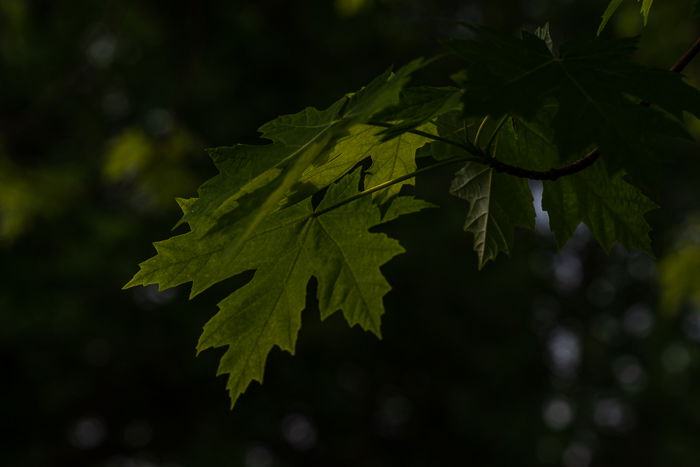
Glass Quality and Coatings
The price is significantly affected by the number and quality of coatings on the polarizer filter. Some filters have no coatings at all. The more expensive filters have coatings that reduce glare and make the filter scratch-resistant. They also have coatings that repel water, dirt, dust, and the oil from your fingerprints. Some have anti-static coatings. The top-of-the-range filters have coatings that harden the glass. These make the filters nearly unbreakable.
The glass quality and coatings applied can affect image quality. Depending on the quality of your lens, you may or may not see a difference. But if you mount a low-quality filter on a high-quality lens, the image quality diminishes.
Metal Casing
Because polarizers are mainly used by landscape photographers, build quality is a factor. The best polarizing filters are lightweight and protected by a strong, metal casing. The quality of the metal casing determines how easy the filter is to screw onto your lens and the ease of rotation.
The less expensive filters use metals like aluminum. The higher-priced filters tend to be made from brass. Higher quality filters can resist breaking when dropped. They keep their shape even if used frequently. The lower quality metals may bend with use.
Filter Size
Filters come in a range of sizes to fit different sized lenses. The size of the filter affects the cost. Most companies offer filters in a range of standard sizes from 52mm to 82mm. The larger filters cost more. When comparing prices, look at filters of the same size. A 58mm filter will seem inexpensive compared to an 82mm filter regardless of features.
When buying a polarizing filter, it is important to know the diameter of your lens. This is measured in millimeters and is usually stamped somewhere on the lens itself.
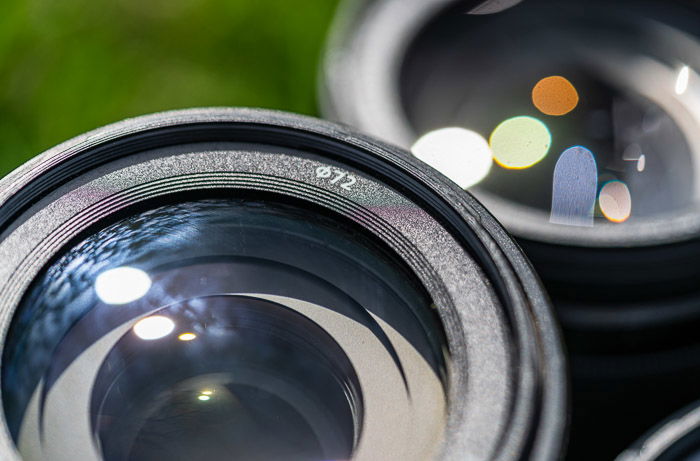
Mounting System
Most polarizers screw onto the front of your lens. Some have threads on both the back and the front. The front threads let you stack filters.
A few companies use a magnetic attachment to replace the screw-on design. You first screw on a magnetic holder to the front of your lens. Then the magnetized filter pops onto the holder.
Other companies use a drop-in filter design. You first mount a holder onto the front of your lens, then drop the filter into the holder. Magnetic and drop-in filters are easy to attach to your lens. You can add or remove them quickly. Drop-in filters may be round or square glass. They are often more expensive, partly because you buy the holder separately. But also because the filters themselves are large. The benefit is that this holder will fit on all your lenses regardless of size.
Some companies choose one system exclusively. Others have different lines of filters.
Which Size Filter Should You Buy?
Screw-on and magnetic filters come in many sizes that range from 39 to 105mm. They are designed to fit on lenses of different diameters because most photographers own lenses of varying sizes. Instead of buying filters for each lens, buy a filter to fit your biggest lens. Then, add high-quality step-down rings to use the filter on all your lenses.
Some photographers advocate buying a size larger than your biggest lens. This reduces vignetting at the widest focal length.
The Neewer step-up ring set is a budget-friendly option.
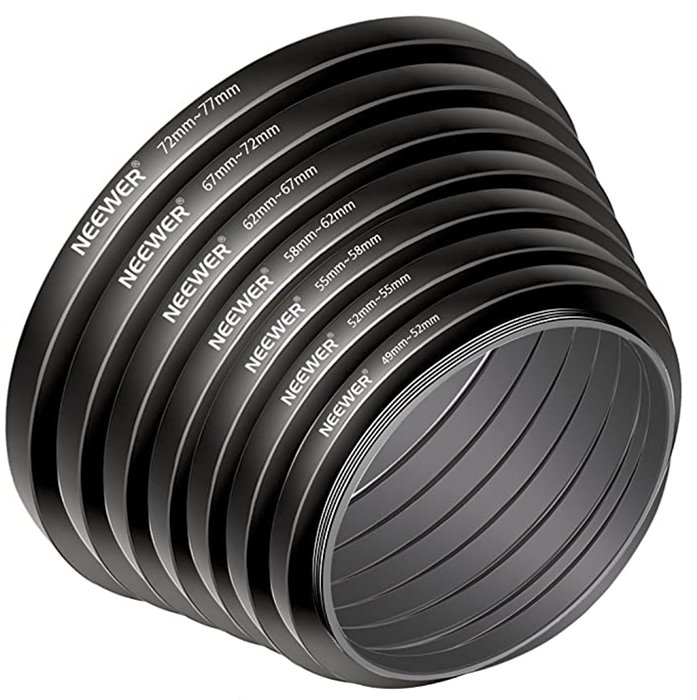
Another quality option is the brass adapter rings made by Breakthrough Photography. These are sold individually rather than as a set.
How to Use a Circular Polarizer
Using a polarizer takes a little practice. The polarizing effect only works when the filter is perpendicular, or at a 90-degree angle, to the light.
- Put the polarizer on your lens.
- Move your body so the sun lands on your shoulder. This should put the light at a 90-degree angle to your lens.
- Slowly twist the polarizer. Remember that polarizers are designed to rotate. This lets you control how much you are polarizing the light. As you twist, you should see reflections or glare begin to disappear.
- Keep twisting, and the reflections return.
Many photographers do not see an immediate effect of a circular polarizer and ditch it. There is a level of experimentation that comes with a circular polarizer. The best position and rotation depend on the light in the scene.
Photographers use circular polarizers to reduce reflections in water and enhance color vibrancy in skies and foliage. Polarizers vary in glass quality, the number of coatings, and unwanted effects like vignetting and color cast.
The Breakthrough Photography 4x circular polarizer is a great choice as a mid-priced option. If you are on a budget, try the 28-layer K&F XC CPL. If price is no object, the Lee100 drop-in filters are top-of-the-line.
There is a range of options from high-end, expensive filters to budget-friendly offerings that have a lot going for them. When looking for the best polarizing filter, the trick is to balance quality with affordability.
----------------------------------------------------------------------------------
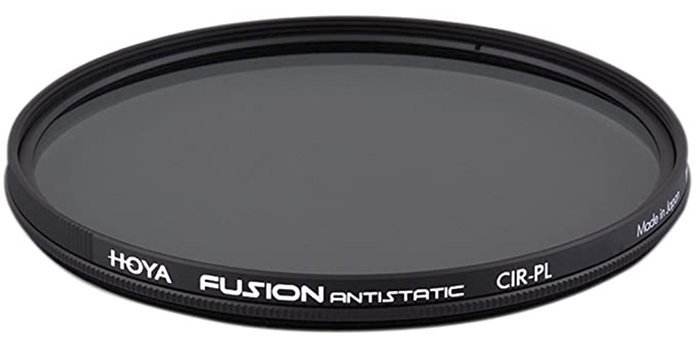
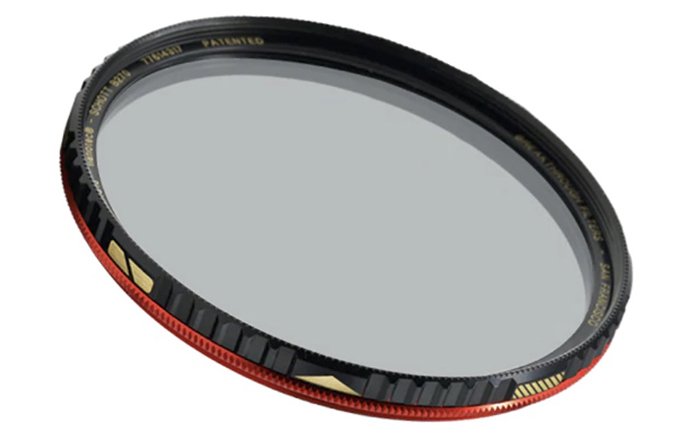
No comments:
Post a Comment
Note: Only a member of this blog may post a comment.